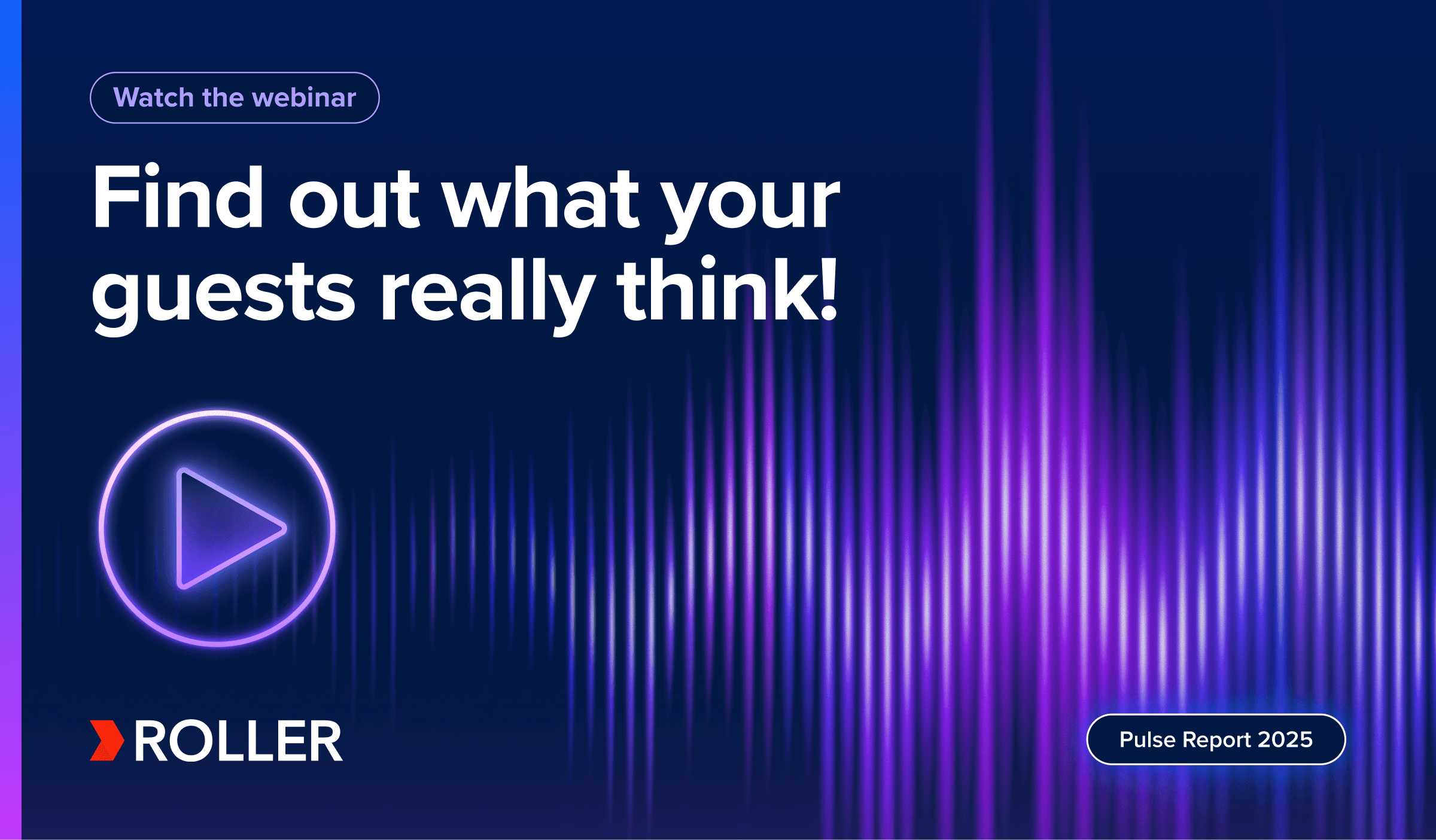Magic Metrics: The Data Points You Need to Know

Making sense of data can be overwhelming, especially for small operators navigating the complexities of guest behavior and financial performance. At the other end of the spectrum, larger operations are often drowning in a sea of data points, making it difficult to determine which metrics truly matter. So, how do you cut through the noise and focus on the numbers that will actually move the needle for your business? Enter magic metrics.
I’ve managed everything from small multi-location family entertainment centers to large theme parks, and if there’s one thing I’ve learned, it’s that data is your greatest weapon. While trusting your gut is part of being an entrepreneur, nothing beats the confidence of making decisions backed by hard numbers.
Why data matters
Your data tells a story. It reveals the hidden patterns that can make or break your venue’s success. Here’s why it matters:
- Data prevents you from going out of business – this might sound extreme, but it’s true! Spotting negative trends early can give you time to course-correct.
- Data provides clarity on what’s working and what’s not – no more guessing.
- Data helps you identify opportunities and avoid pitfalls – focusing on the right insights can drive revenue growth.
- Data validates your gut instincts – giving you the confidence to make key decisions without second-guessing.
Read this next: Save Up to 125 Hours per Year with Analytics
What are magic metrics?
With so much data at your disposal, it’s easy to measure the wrong thing at the wrong time. Every business is different, but finding a small set of key metrics that indicate your business’s health and drive growth is essential. These are what I call magic metrics—the numbers that give you a “finger on the pulse” of your operation.
Here are some of the magic metrics that have proven invaluable to me over the years, broken down by where they sit on the customer journey.
Acquisition metrics
Getting people through the door is the first step. The magic metric you should track during the acquisition phase of the customer journey is your conversion rate (%). A conversion rate measures the percentage of visitors who take a desired action (e.g., from inquiry to purchase). This can be broken down into stages:
- Website visitor-to-booking page conversions – Evaluate the effectiveness of your marketing and website experience. You can break it down by the channel they came in through to help you plan marketing (social, search, press, etc).
- Booking page to purchase conversion – Determine how smooth your online checkout process is. This rate will tell you if improvements need to be made in your checkout experience. Explore the stage where people are abandoning your checkout so you can make immediate changes.
How to make sense of conversion rates
Analyzing these numbers can help you identify gaps in your marketing funnel. If your booking page conversion is low, tweaks to your checkout layout or a change in provider may be needed. Explore the stage where people are abandoning your checkout and think of it like a hole in your net – you should make immediate changes!
Guest experience metrics
Once guests are in your venue, how do you ensure they maximize their spend and enjoyment? There are two magic metrics to look for here.
Guest experience metric 1: Spend per guest (SPG)
This metric tracks total revenue divided by the number of guests. I love this metric, as you can go right down to the department, product, and even channel level. It can be further broken down into:
- Entry tickets vs. food & beverage vs. retail – Understanding revenue distribution can help you identify upsell opportunities.
- Online vs. onsite vs. third-party sales – Helps refine pricing and promotion strategies.
- Daily and weekly tracking – Allows quick adjustments based on real-time data.
SPG example
This month, 2,000 guests visited your venue, generating $140,000 in realized revenue—that’s revenue from products and services used on-site, excluding future bookings. This means your spend per guest (SPG)—the key magic metric —is $70. Breaking it down:
- 80% of revenue came from entry tickets → $56 SPG
- 15% from food & beverage (F&B) → $10.50 SPG
- 5% from retail → $3.50 SPG
Now that you have the magic metric, you can use it to measure and improve performance across departments. For example, if you want to increase F&B SPG from $10.50 to $10.70, you can introduce a new café promotion and track daily results to see if it’s working and, more importantly, if it's not cannibalizing other products.
Using SPG at a product and channel level
You can also analyze individual product performance. Ask yourself, "How much does each product contribute to SPG?" and "Could another product perform better or drive more sales?"
Beyond individual products, you can apply this strategy at the channel level by assessing spend per guest across online, onsite, and third-party sales. Optimizing each channel involves different tactics:
- For online sales – enhancing add-ons at checkout can increase order value.
- For onsite transactions – training staff to upsell the right products ensures guests receive relevant offers
- For third-party sales – evaluating commission structures and promotional offers can help maximize profitability.
By tracking and tweaking the magic metric, you can make data-driven decisions that drive more revenue—one small change at a time!
Guest experience metric 2: Dwell time
If your venue offers onsite revenue options and benefits from guests staying longer (e.g., cafes, retail stores, side games), tracking how long they remain on-site is critical. Longer visits = higher spending potential!
To accurately measure guest entry and exit, you need a reliable tracking method. This could be through your venue management software, like ROLLER, which records check-in times, turnstiles that track entry and exit, or even the end time of a guest’s last booked activity, such as a jump class.
Dwell time example
If your venue shows a strong link between revenue, guest feedback ratings, and how long guests stay, then dwell time becomes your magic metric. For instance, if the average guest spends three hours at your venue, then increasing that by just 10 minutes results in a $0.20 SPG boost. You now have a clear opportunity to drive growth.
To achieve this, you can experiment with ways to extend dwell time—such as adding free experiences, running fun promotions like surprise giveaways, or scheduling mascot appearances or performances every four hours. With the right data, you can test, refine, and repeat until you find what works best!
Retention metrics
Retention is a key stat for growing venues to track, particularly if you have membership or season pass products to upsell customers to. Here are some of my key retention magic metrics to track:
- Repeat visits by product type – Look at memberships vs. day passes vs. three-day passes. This gives you an indication of whether people return and how often they return (are you giving them enough reason to come back?)
- Membership SPG – I tracked this metric in the past by having members scan their membership passes at retail and F&B stalls to receive a small discount. We then tracked their spending against their membership record. This is very important as members can spend less onsite compared to new visitors, so it allows you to measure the effectiveness of your program holistically and establish a profitable price point for the membership if things don’t add up.
- Retention rate – This is where you look at membership growth and then churn rate and or cancellations. You want to know if your membership program is working. If the churn rate is high, then the value may not be there. What can you do to influence the rate by a few % points? Simple perks, event access, or exclusive offers can drive renewals and increase lifetime value.
Read this next: How ROLLER Analytics Helps Venues Grow Memberships
Final thoughts
Your venue’s success hinges on focusing on the right data. By identifying and tracking the right magic metrics, you can optimize acquisition, guest experience, and retention to drive sustainable growth!
Want deeper insights? Download your copy of the 2025 Attractions Industry Benchmark Report, and follow me on LinkedIn for more industry insights.
Related articles


2025 Pulse Report Webinar: Operators Unpack the Guest Insights

Indoor Playground Software Buyer’s Guide: How to Compare POS Systems and More
Enhance your guest experience
Get free education, tips and inspiration to help you run a successful venue.
